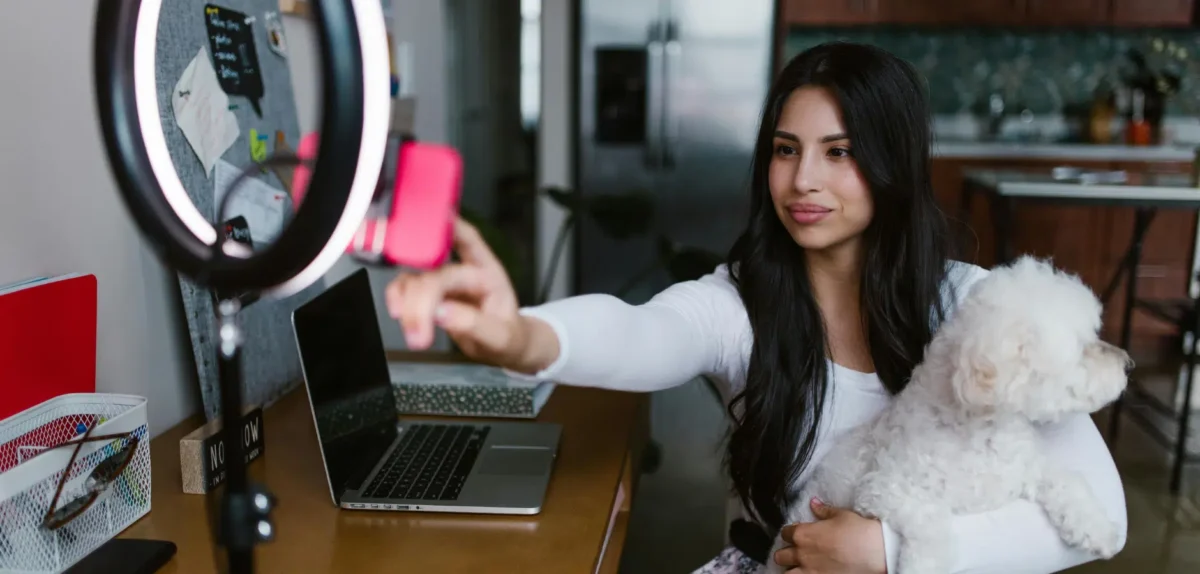Lumin is a freshly minted men’s skin care and wellness brand with a strong problem-solving culture. Global, digital, and growth-minded, they rely on a range of marketing channels and partnership types to reach new customers and build brand awareness. Impact has played a role in Lumin’s growth by enabling the company and its agency team at Oak Digital to better understand and optimize the value of its partnerships.
Impact’s Lisa Riolo interviewed the Oak Digital team along with Priya Prasad, Director of Growth at Lumin, to find out how Lumin’s partnerships and approach to measurement have evolved over time. Check out the video of the convo here, or read the full transcript below.
Getting the right mix of partner and offer
Lumin’s partnerships are varied and include both organic and paid promotion by premium publishers, traditional affiliates and deal sites, influencers, podcasters, and more. It also has different revenue models for its products, selling products on a one-off retail basis or via a free trial that rolls into a subscription. Measuring the contribution of a partner depends in part on which kind of sales they are driving, AOV, and a range of other factors. That’s why the Oak Digital team relies heavily on Partnership Cloud’s full-funnel analytics to keep the balance right, optimize ROI, and scale the partnerships and tactics that perform best.
Want a look at Partnership Cloud’s analytical capabilities? Reach out to an Impact growth technologist at grow@impact.com.
Here’s the full interview transcript:
Lisa Riolo:
I’m Lisa Riolo and I am one of the co-founders of Impact. So it’s really exciting for me to be able to see how far we’ve progressed and look back on where we were when we started the company 10 years ago. I am responsible for strategic partnerships and I oversee the partnership team. So I have the pleasure of working with our channel team that manages our agency relationships, and also all of the various media partners, publishers, affiliates, and companies that are making the referrals over to our brand side. So we have both of those teams under my group and it’s very relevant for this conversation that we’re gonna have today. I’m really looking forward to it.
I think the best way to start off is Priya, tell us a little bit about your role in your organization, and then we’ll go from there about learning about your brand.
Priya Prasad:
I am the director of growth at Lumin. We are a premium men’s skincare company, we’ve recently kind of expanded into verticals, which I’m sure we’ll talk about a little bit more down the road in this call. What that kind of entails is interfacing very closely with the kind of our engineering team on things like website optimization, conversion rate optimization, managing all of our digital channels, as well as starting to explore larger brand partnerships, and managing offline. So looking into channels like TV or podcasts and things like that as we start to scale. and I think the one kind of cool thing with Lumin is that, unlike a lot of American founded D to C brands, we are taking a global first approach. And so we’re not wholly focused on the U.S in fact, the U.S only accounts for maybe half of our total kind of order volume right now. And I think something that’s overall been really exciting for me personally, joining the brand, maybe now nine months ago.
Lisa:
Would you share a little bit more about the origin story of Lumin? How long has it been around, and how are you arriving at where you are today?
Priya:
So we are just shy of two years old. Lumin actually was founded by one of our co-founders, Ricky, who then brought on Darwish, our other co-founder, a few months afterwards. But kind of out of the notion of men’s skincare and just kind of overall wellness and hygiene habits, as it pertains to skincare, he felt it was kind of inaccessible. And I think he experienced specifically going into department stores or beauty stores, like the Sephoras or the Ultas of the world and not really finding that it was like an approachable or easy conversation for him to have when he would go in with almost zero context into like what he should be putting on his skin, not knowing if he had dry or oily skin kind of like things that I think as women we find to be just kind of inherent to our self knowledge base.
I think he found it very difficult to kind of bridge that gap in kind of those situations when he would go and try to ask questions. He was pretty lucky that his sister Chelsea, who’s now our head of customer experience, is like a super, super skincare aficionado, and does tons of research, knows so much about ingredients, that he was able to go basically go to her and say like, Hey, these are kind of the issues or the problems that I’m trying to solve for myself. And I think that’s also another thing that he kind of recognized within men specifically, is that what skincare they’re not necessarily doing skincare is a self care habit. They’re doing it as a problem solving sort of habit and trying to understand like, this is what I’m struggling with, how do I solve that?
Lisa :
An interesting thing to note, I think about your company’s progression is, and you have a strong background in performance marketing, and I think when you think about the concept of the, the problem solving and you think about performance marketing, and then you think about those principles and how that works in terms of your whole company’s culture and brand, might be interesting to really look at what you think has changed maybe in performance marketing from your historical background and how that’s applied differently today at Lumin.
Priya:
Historically throughout my career, at least the last six to seven years, even to today, channels like paid social are always going to kind of own and operate a lot of your marketing fiscal budget, just because it’s a very inexpensive way for small brands to be able to scale pretty efficiently. I think one thing that has inherently changed within that channel specifically is the nature of creative, how to film really high performing creative, like the old school advertising notion of if you build a brand, they will kind of doesn’t exist anymore in the digital world. It’s really kind of a UDC product and consumer first sort of testimonial content that’s really driving generally the most efficient conversions. I think that there is an aspect you kind of got more old school notion of advertising of social proof and validity that comes with that sort of creative.
But I think that there’s more creative ways or creative channels that you can kind of leverage to drive that. And I think we’ve done some of that through the affiliate program here with kind of the content publishers, we’ve been able to kind of engage with it at a higher rate than we normally would be able to. But I think one thing that a lot of marketers are starting to really understand is the aspect of full funnel. And I think a lot of people talk about full funnel marketing as this like broad spectrum idea, but don’t really kind of understand the full flow dynamics from launching a channel like TV and how that trickles down all the way to paid social or email or even affiliate. and I think that’s something that we’re starting to try to understand.
Lisa:
I’m curious from your point of view, if the KPI or the goals have changed a lot as a result of that very metric driven orientation, but at the same time being collaborative and innovative about the creative itself.
Priya:
Overall KPIs haven’t really changed, like how you look at a business and a business health is kind of going to remain the same it’s profitability, EBITDA, things like that. From a marketing perspective, generally what we’re looking at is very determinant by the type of order that we’re driving. So I think Lumin is kind of a unique situation in the sense that you’re allowed to buy retail one time purchase orders, but you’re also allowed to get a one month free trial that then auto turns into a subscription. Right? And so we have kind of, I think, two very distinctive groupings of KPIs at the business level that we’re starting to, I think even invest more so into now, as we’ve started to see the percentage of one time purchases grow as we’ve implemented other channel tactics, or even as a result of tactics that we’re implementing on the affiliate side.
Lisa:
I’m very curious. How collaborative are you with agencies and how typical is it for you to involve agencies in all of those steps in the process?
Priya:
I think agencies are a good call when the value is there, I think that’s the best way to really kind of, think about it. Are they producing content or results that you would not be able to produce internally on your own? And if not, that’s not a great conversation that you’re going to need to have, but if they are then the value add is there and they’re kind of just proving their worth in the sense of being able to kind of produce what you could ever do yourself.
Lisa:
Well, and in terms of proving their worth, I know, Oak digital is one of the agencies you work with and they’ve joined us on the call. So, Amit, let’s have you, chime in a little bit here, and give us a little, a bit of background about your agency and the role that you play, especially with respect to the performance component of Priya’s business.
Amit Khera:
Oak is a performance marketing agency focused on DTC firms, really, specializing in content partnerships. In terms of how we’re working with affiliate programs. So we have a, and my background comes from running e-commerce at large brands like Aeropostale and Ralph Lauren. So I had a very specific vision when starting this agency, trying to fill some gaps and kind of seeing how the market was going and how affiliated was trending. And I think that’s a big part of how we work with Impact as well.
Impact allows for some really good measurement tools, that helps us do what we do, which is focused on really high level content partnerships. So affiliates in general, you know, it takes a successful program, takes a lot of effort to build. So as Priya was mentioning, relationship building is key. Brands work with agencies because not only do we have experience, agents, agencies bring a wealth of experience, but they also have leverage. So they’re managing relationships, across publishers, that’s earning millions of dollars a year for these different publishers. So it’s a whole different conversation when we come and sit at the table versus a single brand.
Lisa:
Wow, that’s really great. Hey, Priya, I’m wondering, as we think about this description of how we’re working with partners today, is this viewed internally within your organization, is this shift that’s been happening over time and it, and again, I’m kind of just feeling like there’s more collaboration that’s going on. It’s changing the dynamic. Has resonated with the rest of the team at Lumin? Are you finding that there’s a receptivity to this different way of doing business?
Priya:
In the early days, that was a little bit of a struggle. And I think mostly, not for any sort of like negative reasons or anything, but I think that there was just a misunderstanding around the nature of affiliate and how it differs from a traditional kind of digital channel, like a paid search or a paid social, or a Snapchat or a Tiktok where you can just set your budget, set beds, exorbitantly high, and spend till you’re blue in the face, right? With affiliates, you are so much more partnerships sort of dependent on that maturation period in order to launch and scale a program, rather than it being one to two weeks, it’s really kind of in that three to six month range.
At an executive and even board level within the Lumin organization, we’re starting to see really the understanding of what that impact is. I think that there’s a couple of very kind of key things around that is that with affiliate, we’re able to drive a higher discrepancy or ratio breakdown between free trial and non pre-trial purchases. So we’re driving a higher portion of day one revenue, which is great, right? And so it’s like, how do we find that balance there? And I think that’s something in the second half of the year that Kelly and I are partnering very closely on trying to figure out, like, how do we find this balance? So we’re continuing to scale from an orders perspective, but we’re also continuing to scale from a revenue perspective, not just focusing on the free trial, but I think another thing that’s probably a bit more qualitative and kind of what Amit talking about is, I came on in November just for context, and so in Q4, with one a different PR agency than we currently have, and two, know kind of combined efforts between affiliate NPR, we drove five press its in three months. We are now to the point where we’re driving anywhere between five and fifteen per month. and so that’s kind of really happened and just in a very quick period, within four to five months. And I think as a lot of the press kind of initiative started happening in the first quarter of this year, and then ayering on affiliate efforts from a commerce perspective with Yesica kind of owning the content side, that’s allowed not only the publishers to see like, Oh, not only are we able to kind of expand who we’re talking about within this vertical, but we’re also able to potentially expand our publisher level revenue stream by partnering with brands that are one, want to support us in the sense of the affiliate partnership, but also really value kind of the social proof that we can, they, as publishers can provide to our brand.
Lisa:
Let’s pull in Kelly. Tell us a little bit more about your background, your position, and your role. And maybe you can chime in a little bit about what we’re using to measure what’s important and how, and how we work with the partners.
Kelly Farey:
I’m the account director at Oak, and worked on the Lumin program from launch to now. I’ve been at Oak for about a year and a half.
We have quite, I’d say complex or granular reporting. Something that we pull on a weekly basis, we have calls with Priya and we go through, we very much look at different goals. So we have like the free trial sites of the business that’s very much related to certain publisher types, as Priya was saying, we have quite detailed free trial plans. So we’re working with a range of deal, freebie coupon type partners to drive those free trials. I’d say it’s a case of very much looking at the reporting and looking at the KPIs, so conversions and free trials.
Lisa:
So Yesica, I know that Amit mentioned your work with the premium publishers and partners in the content arena. That’s one of the things you do. Can you share a little bit, first of all, what your role is and how you work with those partners.
Yesica Lepe:
I am the senior manager of content partnerships for Oak for almost two years now. I oversee everything from the recruitment piece of content partnerships to the partner management, making sure that these relationships are ongoing, and I also work in tandem with the account teams and making sure that their content strategies are as effective as possible
Lisa:
I’d love to shift the conversation a little bit now and ask Yesica about how you measure the effectiveness and really get more from the publishers or the partner’s point of view. What do you use in terms of metrics and how do you approach the conversation? Because there’s a shared outcome that both the brand and the partners are getting in this relationship.
Yesica:
Yeah. Great question. So I think it’s really important to note that the overall affiliate marketing channel is made up of a huge variety of publisher models. And we do a really great job of making sure that the Lumin publisher mix reflects that variety of publisher models. And we also evaluate the partner’s effectiveness and depending largely on the partner and their particular KPIs. So speaking specifically to premium content partners, there are two routes that we can go down with premium content partners, and that is organic and paid. Specifically for the organic partnerships, it’s really difficult to gauge right off the bat the effectiveness that we will see prior to actually seeing examples of live articles, that we are able to analyze their performance on. Sp once we see those live shoppable, you know, we’re internally able to say evaluate them and determine next steps, to push that effectiveness of, you know, whether the partner,you know, that existing article or maybe upcoming future articles. If repeat partnerships, we can typically, you know, assess the case studies that are given to us, and determine whether we will see an ROI, depending on the metrics that are provided and the metrics that we’re really after the Lumin program and the goals that we’re pushing at that time. So it’s really for the premium content partnerships and for Lumin specifically, it’s largely dependent on whether we’re pushing out free trial, whether we’re pushing a one time purchase or whether we are wanting to hit a specific performance goal for that month. So there’s a lot of variables like having to determine the overall effectiveness of a partner. And we try to incorporate that all.
Lisa:
First off, I want to thank everybody for your participation. I said at the top of the conversation that we are celebrating your success in the form of a discussion. And it’s one of my favorite things to do. So I want to thank you all for that.




